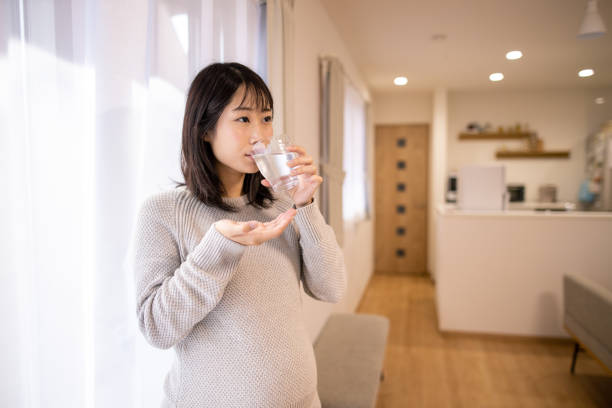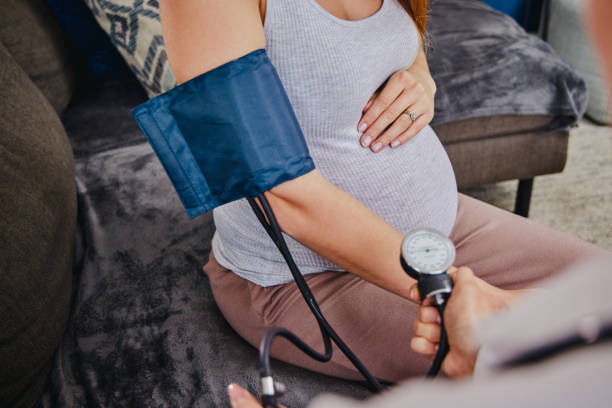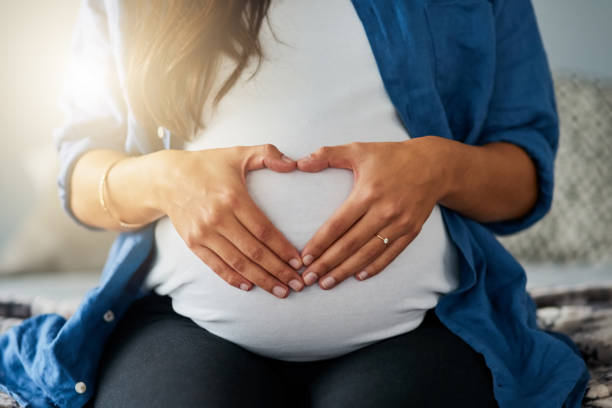National Birth Defects Prevention Study (NBDPS) Key Findings
- No Link Found Between Hydroxychloroquine and Birth Defects
- Participation in Birth Defects Research Using Newborn Bloodspots
- Influenza Vaccination During Pregnancy Not Linked to Birth Defects
- Vasoactive Medications in Pregnancy and Risk of Stillbirth
- Cigarette Smoking by Mothers and Congenital Heart Defects
- Risk of Birth Defects Among Pregnant Nail Salon Workers and Hairdressers
No Link Found Between Hydroxychloroquine and Birth Defects
Key Findings
- Hydroxychloroquine (HCQ) is a medicine used to treat autoimmune diseases.
- Doctors and researchers believe HCQ is safe to use during pregnancy, but little is known about whether taking the medicine can increase the risk of birth defects.
- Using data from NBDPS and the Slone Epidemiology Center Birth Defects Study, researchers found that very few women use HCQ during pregnancy, and those who do use HCQ often have complicated medical histories.
- Researchers did not find a pattern in the birth defects observed in babies of women who used HCQ during pregnancy. This suggests that using HCQ during pregnancy does not increase the risk of having a baby with specific defects.
- Given the small number of women who used HCQ in this study, safety of HCQ use in pregnancy could be informed by future research with additional women.
- It is important that women with autoimmune disease talk with their provider about the best plan of treatment during pregnancy.
Howley MM, Werler MM, Fisher SC, Van Zutphen AR, Carmichael SL, Broussard CS, Heinke D, Ailes EC, Pruitt SM, Reefhuis J, Mitchell AA, Browne ML; National Birth Defects Prevention Study. Maternal exposure to hydroxychloroquine and birth defects. Birth Defects Research. 2021 Oct 15;113(17):1245-1256. doi: https://doi.org/10.1002/bdr2.1991. Epub 2021 Jul 23.

Participation in Birth Defects Research Using Newborn Bloodspots
Key Findings
- Newborn screening is used in hospitals after delivery to test babies for certain conditions that may require immediate treatment.
- Nearly every baby born in the United States is tested for certain conditions using a few drops of blood collected after birth on a paper card (bloodspot).
- If a parent agrees (consents), scientists can use any remaining part of the bloodspot for research.
- Mothers from certain states participating in NBDPS were asked for consent to use their baby’s remaining bloodspot for research about birth defects. More than half of mothers agreed.
- Researchers found that mothers whose babies were born with a birth defect were more likely to give consent than mothers whose babies were born without a birth defect.
- Mothers with more education after high school, mothers who identified as non-Hispanic White, and mothers who were born in the United States were also more likely to give consent.
- Understanding the reasons why parents do or do not give consent is an important part of making sure our NBDPS study community is diverse, and we will continue efforts toward more equitable representation.
- Equal participation of all groups in our study population helps to make sure that the results of our research can have a positive impact on future generations of all babies and families, regardless of race, ethnicity, or education.
- NBDPS scientists are using the collected bloodspots to study many questions about birth defects, including how genes and environmental factors (such as air pollution) might be related to some types of birth defects.
Wong EC, Fisher SC, Feldkamp ML, Romitti PA, Nestoridi E, Desrosiers TA. Factors associated with maternal consent for use of residual newborn bloodspots in the National Birth Defects Prevention Study. Birth Defects Research 2022 April; 114(7):238-248. doi: https://doi.org/10.1002/bdr2.1991

Influenza Vaccination During Pregnancy Not Linked to Birth Defects
Key Findings
- Influenza (flu) vaccination during pregnancy helps to reduce flu-related hospitalizations of pregnant women and of infants less than 6 months of age.
- However, current information on flu vaccination during pregnancy and the risk of birth defects is limited.
- Using NBDPS data, researchers studied whether use of inactivated flu vaccine in early pregnancy was related to having a baby with one of 19 nonheart birth defects.
- Among the 5% of NBDPS participants who reported receiving the vaccine in early pregnancy, researchers did not find a relationship between vaccination and the birth defects, when compared with women who did not receive the vaccine or received the vaccine later in pregnancy.
- This study supports use of inactivated flu vaccine during early pregnancy as recommended by the Advisory Committee on Immunization Practices and the American College of Obstetricians and Gynecologists.
Palmsten K, Suhl J, Conway KM, Kharbanda EO, Ailes EC, Cragan JD, Nestoridi E, Papadopoulos EA, Kerr SM, Young SG, DeStefano F, Romitti PA, and the National Birth Defects Prevention Study. Influenza vaccination during pregnancy and risk of selected major structural noncardiac birth defects, National Birth Defects Prevention Study 2006–2011. Pharmacoepidemiology and Drug Safety 2022;31(8):851-62. doi: https://doi.org/10.1002/pds.5435

Vasoactive Medications in Pregnancy and Risk of Stillbirth
Key Findings
- In 2014, about 24,000 stillbirths were reported in the United States, and stillbirths were more common among pregnancies with birth defects.
- While the causes of stillbirth are often unknown, some of the known and suspected causes involve problems with the mother’s blood supply to the baby.
- Using only NBDPS cases with birth defects, researchers compared pregnancies that ended in stillbirth with those that ended in live birth to see if there were differences in use of medications that might affect the blood vessels, which are known as vasoactive medications.
- These include medications such as pain relievers, nasal decongestants, asthma medications, and medicine taken to treat high blood pressure (HBP).
- Researchers found that pregnancies ending in live birth and stillbirth had similar levels of exposure to these medications, except for medicine taken for HBP.
- Women who had stillbirths were about twice as likely to report taking medicine for HBP.
- Healthcare providers already know that an underlying HBP condition increases risk of stillbirth in all pregnancies.
- These results show that elevated risk seems to also exist when comparing only among babies delivered with birth defects.
- While it is reassuring that most of these medicines do not seem to increase stillbirth risk in the presence of a birth defect, potential risk factors for stillbirth could be informed by additional research.
Kerr SM, Heinke D, Yazdy MM, Mitchell AA, Darling AM, Lin A, Nestoridi E, Werler MM, and the National Birth Defects Prevention Study. Use of vasoactive medications in pregnancy and the risk of stillbirth among birth defect cases. Birth Defects Research 2022 May;114(8):277-294. doi: https://doi.org/10.1002/bdr2.1996

Cigarette Smoking by Mothers and Congenital Heart Defects
Key Findings
- Congenital heart defects (CHDs) are some of the most common types of birth defects.
- CHDs are present at birth and can affect the structure of a baby’s heart and the way it works.
- Using NBDPS data, researchers studied the relationship between maternal cigarette smoking before and during early pregnancy and having a baby born with a CHD.
- The data showed that mothers who smoked cigarettes right before and after getting pregnant had a higher risk of having babies with several types of CHDs (septal defects, tricuspid atresia, double outlet right ventricle).
- These results support the importance of not smoking cigarettes early in pregnancy to decrease the risk of babies being born with CHDs.
- In many cases, the causes of CHDs are unknown. But, understanding risk factors, such as smoking, is important because these can be more easily addressed or changed with prevention plans.
Bolin EH, Gokun Y, Romitti PA, Tinker SC, Summers AD, Roberson PK, Hobbs CA, Malik S, Botto LD, Nembhard WN and the National Birth Defects Prevention Study. (2021) Maternal Smoking and Congenital Heart Defects, National Birth Defects Prevention Study, 1997-2011. Journal of Pediatrics 2022 Jan;240:79-86.e1. doi: https://doi.org/10.1016/j.jpeds.2021.09.005. Epub 2021 Sep 8.

Risk of Birth Defects Among Pregnant Nail Salon Workers and Hairdressers
Key Findings
- Nail technicians and hairdressers use products that often contain chemicals with known potential reproductive effects. However, there has been little research on birth defects in children of women working in these job types during pregnancy.
- A study using NBDPS data suggested a potential link between a mother working as a nail technician during pregnancy and having a baby affected by congenital heart defects (CHDs) and neural tube defects. The study also found a potential link between hairdressing work and oral clefts and defects of the ear (anotia/microtia).
- This study only had a small number of mothers working as nail technicians and hairdressers, but it does provide clues for us to follow up in future studies.
- Specific workplace practices or chemical exposures that might be associated with birth defects among nail technicians and hairdressers remain unclear.
- Reproductive health effects and potential interventions among nail technicians and hairdressers could be informed by further research on job tasks or chemical exposures for these populations.
Siegel MR, Rocheleau CM, Broadwater K, Santiago-Colón A, Johnson CY, Herdt ML, Chen IC, Lawson CC. (2022). National Birth Defects Prevention Study. Maternal occupation as a nail technician or hairdresser during pregnancy and birth defects, National Birth Defects Prevention Study, 1997-2011. Journal of Occupational and Environmental Medicine, (1):17-23. doi: https://doi.org/10.1136/oemed-2021-107561.

